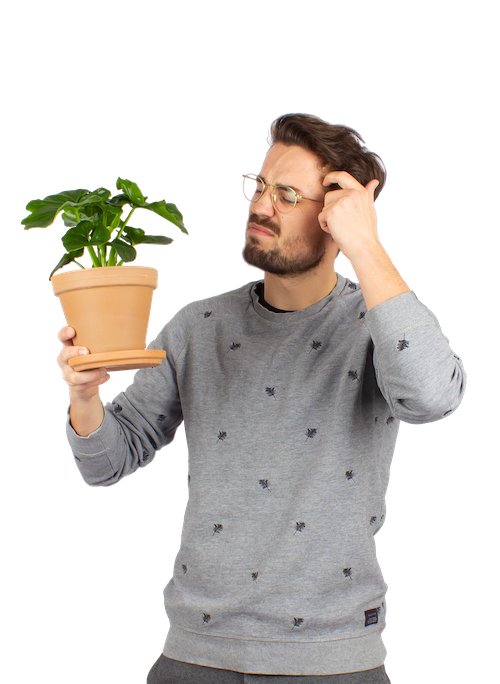When it comes to houseplants, it's all about the roots, right? But, what about the unsung hero – the soil? Sometimes, even the fluffiest green pals can run into trouble down in the dirt. Let's dig into some of the most common soil issues and how to deal with them, because even your plant's roots deserve a little TLC.

The Moldy Mystery:
If you've ever taken a closer look at your plant's pot and detected a fuzzy, white substance, whether nestled under the roots or adorning the soil's surface, don't fret – you've just encountered the moldy mystery. Mold can be a common issue, especially for certain plant varieties that prefer higher humidity or moisture levels (we see you, Miley).
What Causes Moldy Soil?
Mold can make an appearance when soil stays consistently damp. Some plant parents inadvertently overwater their green friends, creating the ideal environment for mold to thrive. Certain plants, like ferns and peace lilies, are more prone to mold issues due to their love for higher moisture levels. Luckily, getting rid of mold is a cinch! Here's what you can do:
-
Gently remove: Lightly scrape off the white spots from the top of the soil. You can add a small layer of fresh soil on top, or leave it as is.
-
Adjust your watering schedule: Ensure that you're not keeping the soil too damp, and reduce the amount and frequency of your watering when you’re seeing excess mold.
-
Improve drainage: Make sure your pot has proper drainage holes and that your plants aren’t sitting in excess moisture after watering.
-
Improve air flow: Sometimes your plants aren’t getting enough air circulation. Consider spreading out some of your plants to allow more air flow through their leaves and soil!
-
Sprinkle cinnamon: Dusting the soil's surface with cinnamon acts as a natural anti-fungal agent and as a bonus, imparts a delightful, cozy aroma to your tropical oasis.
Weed Whodunnit:
If you go to check on your plant’s new growth and you notice little sprouts popping out of the soil that don’t quite match your green amigo: start by identifying the weedy impostor. Weeds often have distinctive leaves or growth patterns that set them apart from your tropical companions, and will usually be smaller with more sporadic growth.
Once you've identified the culprit, it's time to remove it. With clean hands or gloves on, gently but firmly grasp the weed at the base, near the soil. Ensure that you remove both the weed and its root system to prevent any chance of regrowth. Dispose of the weed properly to prevent it from making a comeback.In some cases, weeds may be persistent or numerous, making manual removal a time-consuming task. Consider using a weed-control product specifically designed for houseplants. These products can help you eliminate weeds without harming your beloved tropical greenery. Follow the product's instructions carefully to ensure the safety of your plants.
Soil SOS:
It’s important to regularly keep an eye on your plant's soil. If it starts to look crusty, pulls away from the pot's sides, or develops a weird odor, these are all red flags. It's time to assess the situation and make necessary adjustments. Dry and crusty soil calls for a good soak, while soil pulling away from the sides may indicate root overcrowding. And that unpleasant odor? It's time to check for overwatering or poor drainage.

Nutrient Nourishment:
Your plant's soil isn't just a cozy home; it's a buffet for your green pals. Ensuring your soil is packed with essential nutrients is key. Regularly feed your plants with a balanced, water-soluble fertilizer in the spring and summer while your plants are in their growth period. Keep in mind that different plants have different appetites, so tailor your feeding routine to your plant's needs. See here for our all you can eat buffet.
Aeration Is Everything:
Compacted soil can lead to drainage issues and root problems. Ensure your soil remains well-aerated by adding perlite or coarse sand to the mix. This allows roots to breathe and water to flow freely!

Remember, Different Strokes for Different Folks.
Keep in mind that not all plants are equally susceptible to mold and soil issues, and always ensuring that you’re using the right soil for your plants is an important first step! While some thrive in higher humidity conditions, others prefer drier soil. It's essential to understand your plant's specific needs and keep an eye on the soil any time you give your plants a drink!
And the next time your plant's soil raises a little ruckus, remember – it's all part of the adventure!












